I’ve seen Extreme Cold Weather Clothing System prototypes. Hell, I was issued one while assigned to 3ID LRS in the late 80s, but the ones I’m familiar with were all made by Raven Industries in South Dakota. During my visit to the WL Gore & Associates, Inc mothership in Maryland, I spied this garment on display.
It shares many of the traits of the ECWCS parka prototype I wore, although the face fabric was a better print, with true Woodland pattern coloring instead of the bright Green and light Brown of the prototypes we used at 3ID LRS. Interestingly, the hung liner is Green, rather than Brown, but the front closures are Velcro and the shoulder pocket is on the right side rather than the left like other developmental variants. While the rank tab has an exposed snap rather than the covered ones in later variants, the pocket layout was also true to the issue garment with handwarmer pockets and internal Napoleon pockets.
What’s really interesting about this garment, dating from 1983-84, is who made it.
Marmot did quite a bit of work early in this war, but I had never seen any of their work for the military dating back that far. Has anyone else run across one of these?
Update: This jacket was owned by Marine Nick Allen, formerly on the Gore military team and currently with Camelbak. It’s a Marmot jacket, referenced in the comments. Love the seam sealing.
Tags: WL Gore & Assoc Inc


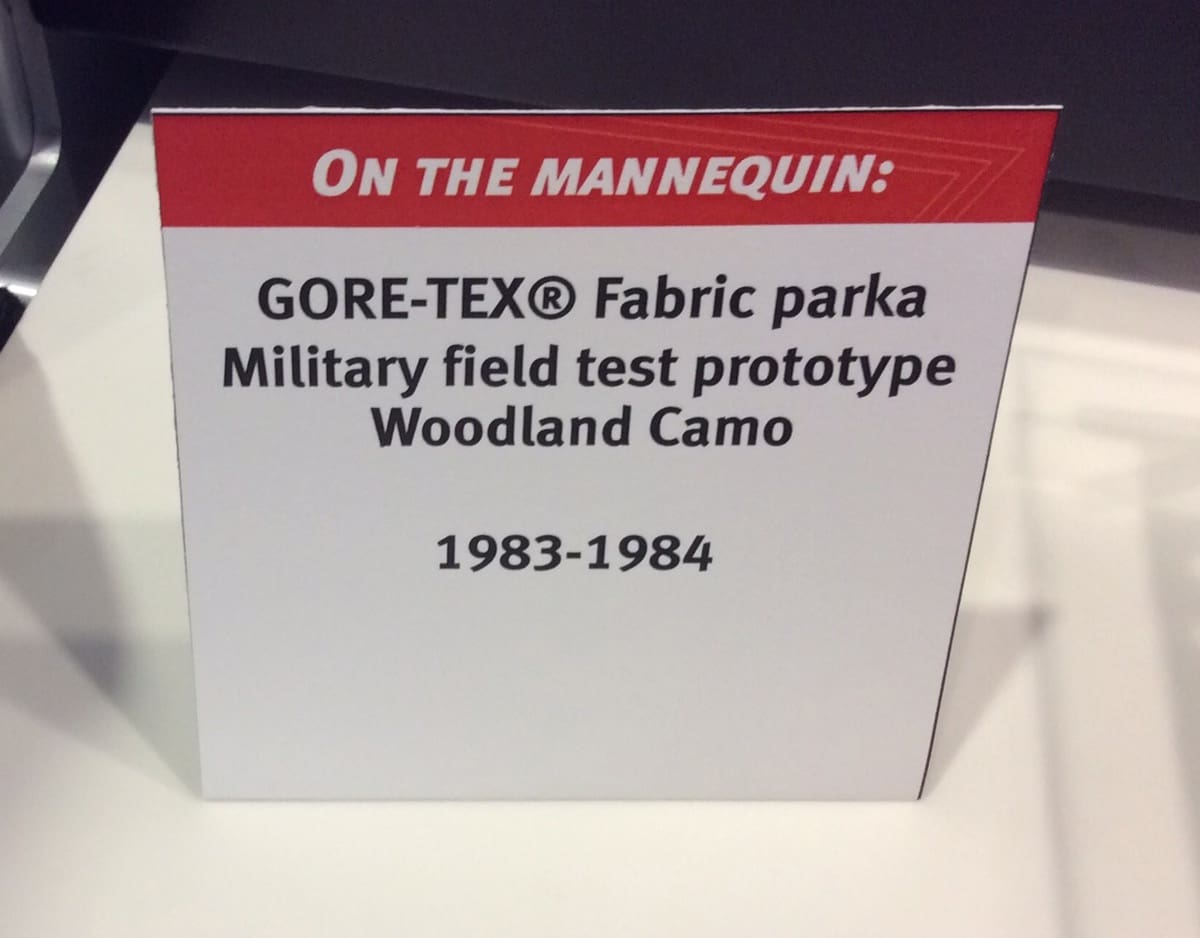
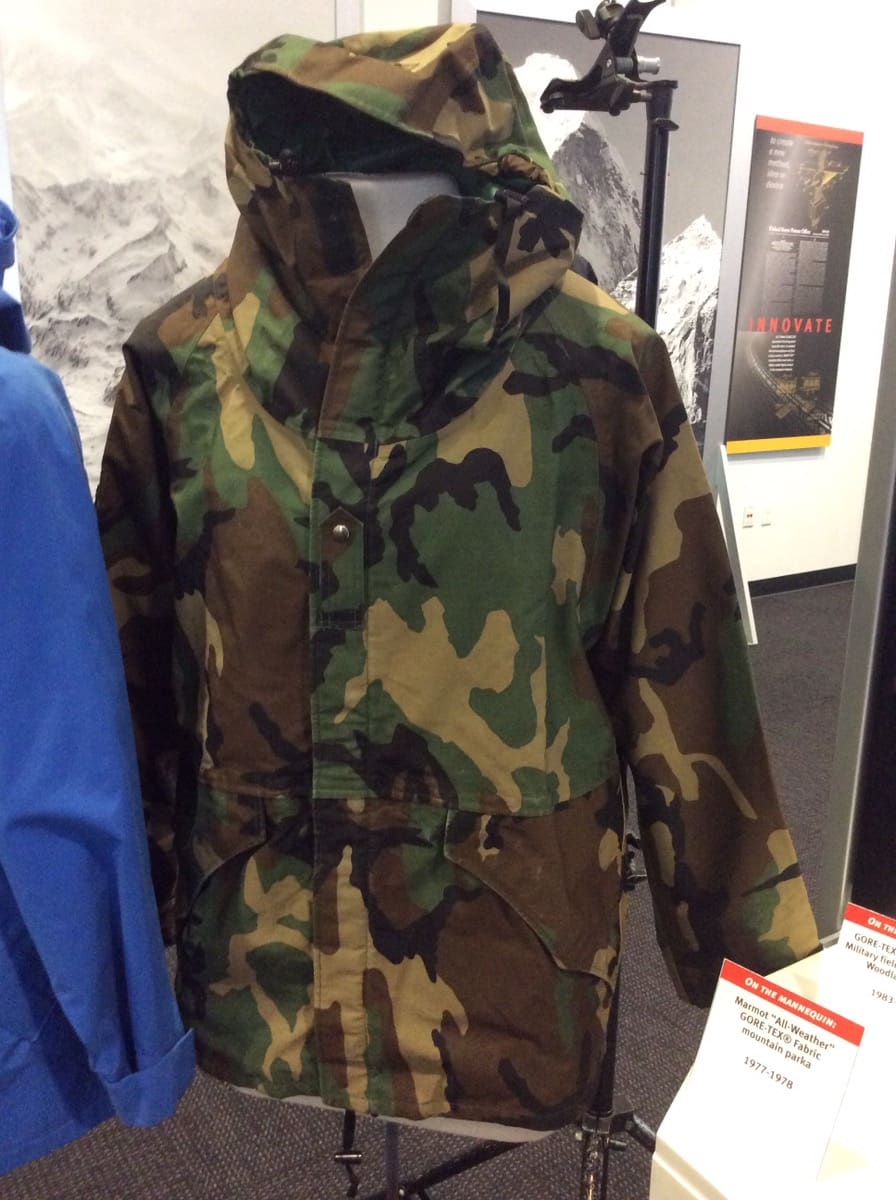
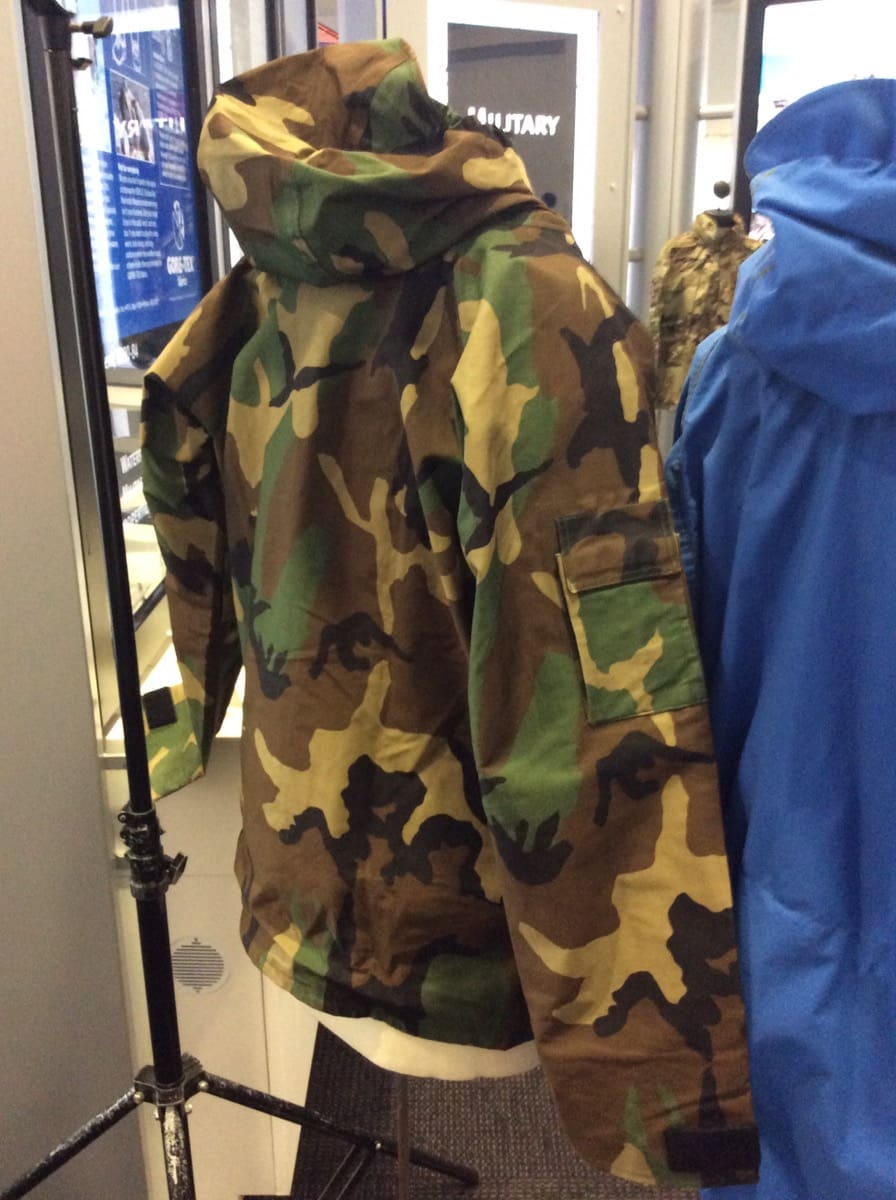
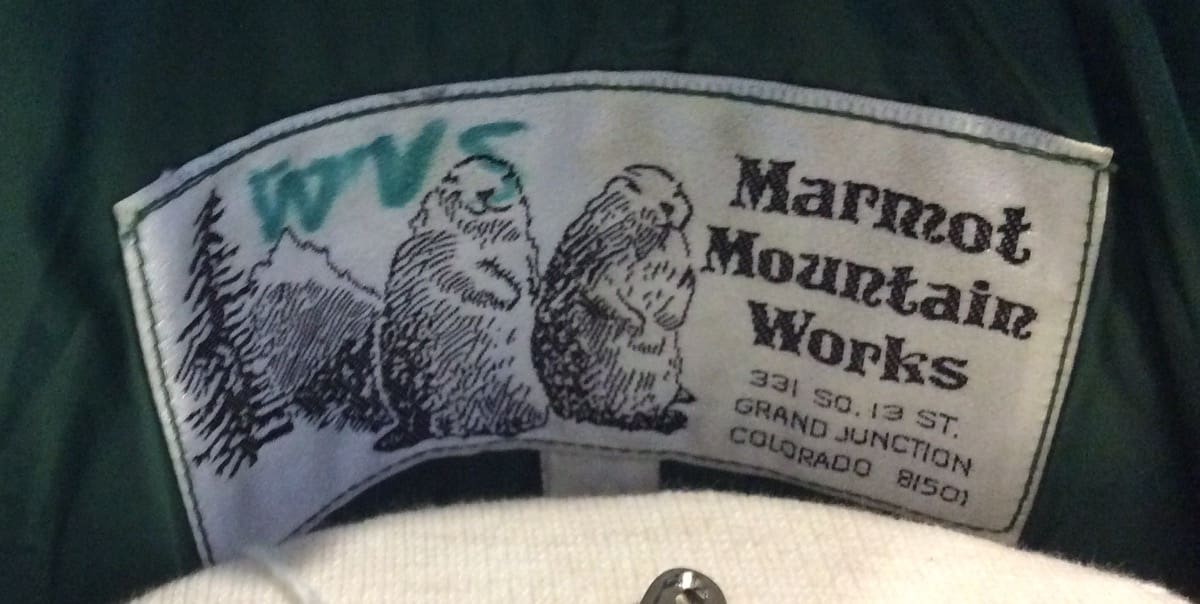
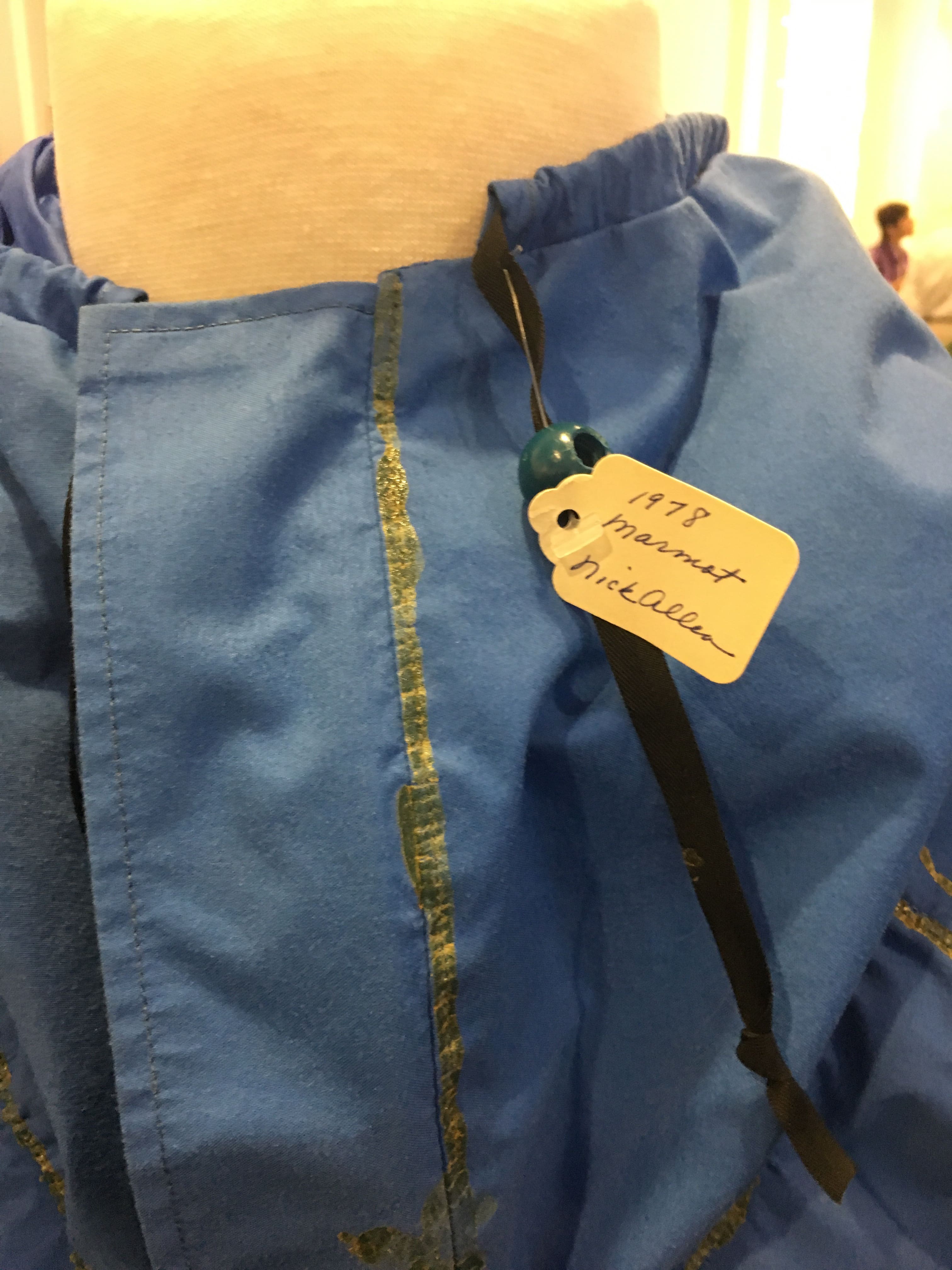
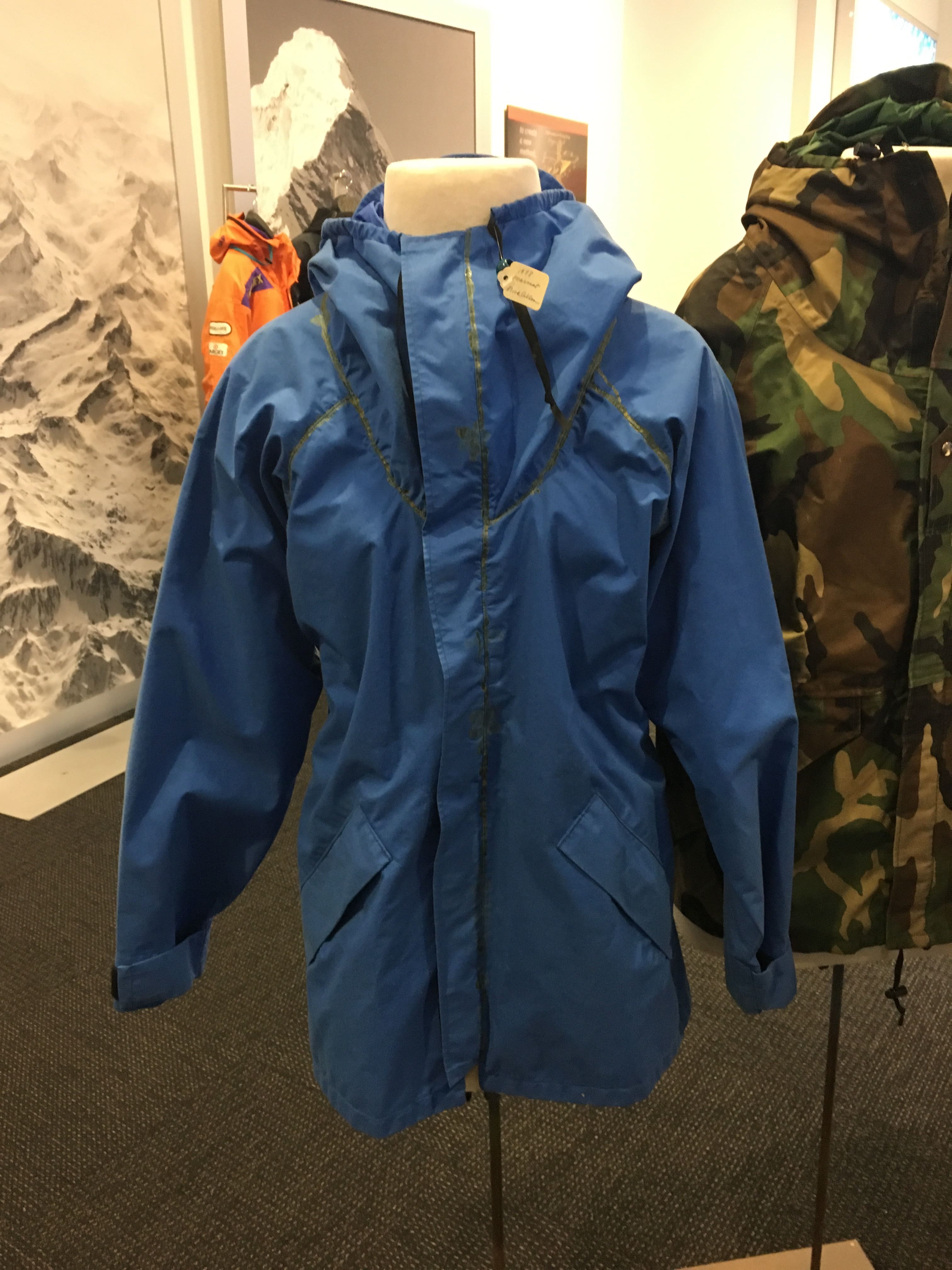
The ECWCS parka was based on the Marmot All Weather Parka.
I see that. I have a photo I’ll post of one which Nick Allen gave to Gore. It’s Blue.
I just bought a vintage Marmot Parka on ebay after reading Hockey’s comment. Very cool. I still have my ECWCS and I love it. Very cool to know where it came from.
As I was Hobey.
I used the ECWCS parka for years, and still have mine that I keep in my vehicle in case of an emergency. However, it seems that the version I was issued was much longer than the gear being issued today. Is there a good tactical reason why the length has changed over the years? I really liked the much longer (almost trench coat length) of the ECWCs parka much like the longer length of Desert Storm era night desert parka.
The ECWCS parka was never as long as the Night Desert Parka which is modeled directly on the old cotton Extreme Cold Weather Parka with button in liner which was replaced by ECWCS.
I have a woodland ecwcs parka that is marked experimental model c. I believe. Got it from my dad who served in the early to mid 90’s at Ft. Greeley at the Cold Region Testing Center I believe it was called. I’ve always wondered how many existed.
WYGuy23 That is probably a ECWCS GEN 2 prototype from ’93 or ’94. There were 3 styles selected for sample runs of about 230 each. We introduced eVent fabric on that program.
Anyone have a source for the lightweight Gore jacket and pants? I had a set issued in 2/75 in 1988, that we used in place of the standard ECWCS, which stayed in our C bags.
I had some friends in 3/75 and they used the lightweight version. They were required to be worn under the uniform though. Don’t know if that was battalion-wide or what. You can probably expand on that.
1985, 86-ish there were individual purchase lightweight Gore-Tex jackets and pants available from Brigade Quartermasters and US Cavalry Store. In a 95, I had to turn in a similar pattern jacket to an SFG Group-CIF. IIRC, it was made by Raven. I liked that jacket, and regret that I never had the opportunity to liberate it from the huge, unsorted bin of clothing and nylon gear, all headed for the shredder I presume. :/
The lightweight stuff I got issued at 2/75 came from brigade quartermaster. And to answer the other Mike’s question, 2/75 liked to wear it under the BDU top also.
Disappointed that you didn’t get Henrietta to model it for these photos…
I may be mistaken, but I was under the distinct impression that at least some of the early prototyping for the ECWCS gear was done by 9th ID, and that some of the early Gore-Tex work was done by Early Winters, up in Seattle.
I’ve seen a Woodland-pattern Early Winters jacket that looks just like the civilian one I own, and it had tags on the inside saying it was an issue item. Additionally, when I visited the storefront they had up in Bellevue (if I remember the location right…), they had a couple of the prototype parkas on display, as well.
I think Marmot Mountain Works may have been brought in when Early Winters couldn’t scale up production to even meet the numbers for doing the testing.
I may be mistaken, too, in thinking that the guys who got the ball rolling for ECWCS were also the same guys who got Danner engaged for what became the Fort Lewis Boot–A bunch of outdoorsy Lieutenants over in 2/23 IN, which is why you’ll find some of this stuff out there with the Tomahawk on it. Back when the 9th ID was the High Technology Light Testbed, they had a bunch of money available, and used it right. Lots of the gear we used in the 1990s came out of there, including the LBV–Which started out as the chest harness they issued the drivers and gunners on the Chenoweth dune buggies those guys were running around in.
Wherever the push came from to move 782 gear towards the lighter weight, high performance fabrics and textiles of the backpacking and outdoorsman market, I’m appreciative of it. It was certainly interesting serving through the transition of WWII/Vietnam/DS 1.0 gear to ‘commercial off the shelf’ type gear in issue patterns.
This is a really cool history post in the vein of LTC Baldwin’s issue gear history (of which I hope we’re due for another installment soon).
Invictus,
I actually have several new subjects in the works. Coming soon as they say.
TLB
I’d love to see someone nail this stuff down, finally. Things like “Where did the assault pack come from…?”, with definitive, documented answers.
I know that “RUMINT” had it that the initial assault packs were basically copied off of the Gregory “Day and a Half” climbing/hiking rucks that were so damn popular back in the ’80s, but as to how they got from there to the Eagle and LBT designs we all know so well…?
The screwed-up thing is, we know how poorly documented a bunch of the old-school WWII and onwards stuff was. And, we didn’t bother to even take notes or write a lot of the stuff we were doing in my generation, despite knowing that. I remember asking the 101st Division Historian while I was in Iraq what they were doing to document all the gear used by the division, and how it had been arrived at for purchase/issue–And, getting a “deer-in-headlights” response from him. Wasn’t even an area he was really interested in, and as a result, I think that it was kinda doomed to be an area of limited documentation.
Gear guys are in the minority, until people start freezing to death because of poor-quality stuff. Then, it’s all panic-stricken “We gotta fix this, now…”. The area of field gear and so forth direly needs some historical attention, because we keep f**king the same damn things up. And, Natick is about ‘effing useless at preventing that crap, because they don’t document, and they don’t go back and look. The incredible recurrence of the “blown crotch” just proves that–Initial Vietnam-era issues of the OG-107 uniform had problems with the crotch design, and you’ll find a lot of guys who complained about the same thing we ran into during the 1980s, with the Hot-Weather BDU… Which we ran into again, with the ACU. One would think that after three f**king different uniform programs had the same damn issue, that someone at the level of Natick would have taken note, arrived at some “lesson’s identified”, and then carried those forward into “lesson’s actually f**king learnt…”.
Unfortunately, this is Natick we’re talking about. They do some things really well, and the rest…? Yeah. I could go on for a few hours more.
Kirk,
I agree. You can’t very well learn from history if nobody bothered to document the history.
I have a series of books Shelby Stanton put out in the early 90s on US Army Uniforms. Separate books for WW II, Korea, Vietnam and the Cold War. Great reference but out of print as far as I know.
Some of the best sources you can find today on field uniforms and issue gear come from publications tailored for Reenactors and Military Scale Modelers.
Both of those groups are sticklers for accurate detail and verifiable authenticity.
Beyond that I’m afraid you are right. Much of the “how was this piece of kit developed” has already been lost.
I still can’t find any source that explains why the Army dropped the functional and popular H-harness for the less stable Y harness with ALICE.
I don’t recall any RUMINT on the subject either. Even though I was there for the transition. Just one example.
TLB
I remember seeing someone wearing a bright green ECWCS parka in ’93 and being told they were an issue item for OPFOR at FT Irwin. Is that right?
Opfor bought lots of grey ECWCS in ’93 too
Geronimo at JRTC had the same green Gore-Tex stuff. OPFOR wasn’t allowed camouflage uniforms in the box. It was really fun as a 2d CAV augmentee in February when none of my issued outer layers were allowed.
When I was stationed at NTC with OPFOR in the early ’90’s, we were issued a gray ECWCS jacket and over pants. Exactly the same as the woodland versions, just gray.
Marmot used to do quite a bit of military specific styles until they got hosed big-time by a suspicious contract appeal by an obscure factory; resulted in them having to destroy a bunch of glove inventory after the bid process was re-opened. Last military item they did was a militarized version of their then popular Sharp Point soft-shell.
A gal that does a lot of current Mil prototyping for Goretex is still based in Grand Junction, Co and was higher up in Marmot before they went offshore. Got to see here shop and she had probably a few thousand yards of ABU goretex. Only place you will probably find MARPAT Goretex scraps used as cordage.
After reading this is picked up a vintage Marmot All Weather Parka. It was made around 1978. Laying next to my Ecwcs parka you really can see the marmot DNA in the final design.